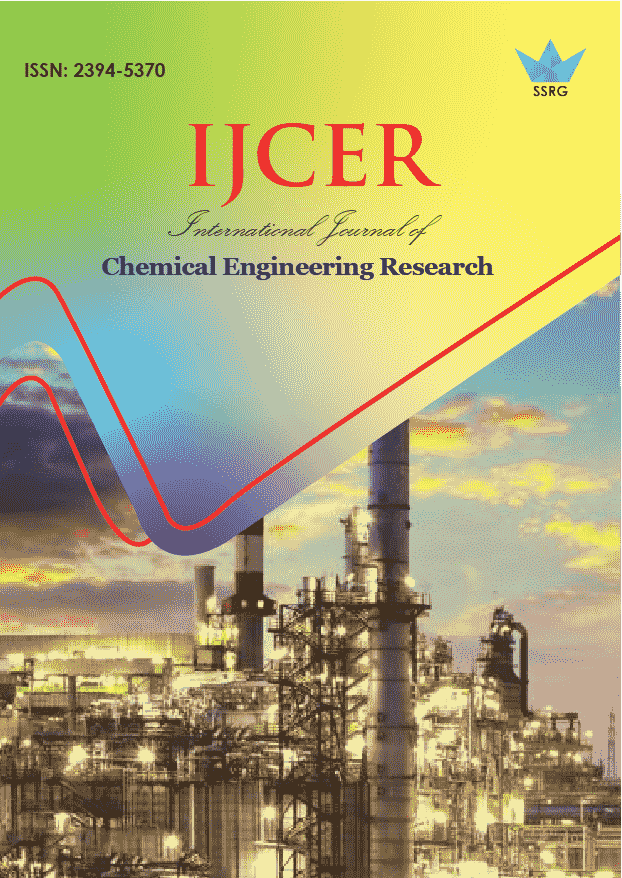CFD Study of the Normal Force Exerted on a Sphere Moving Close to a Surface

| International Journal of Chemical Engineering Research |
| © 2016 by SSRG - IJCER Journal |
| Volume 3 Issue 1 |
| Year of Publication : 2016 |
| Authors : Asem AL Jarrah |
How to Cite?
Asem AL Jarrah, "CFD Study of the Normal Force Exerted on a Sphere Moving Close to a Surface," SSRG International Journal of Chemical Engineering Research, vol. 3, no. 1, pp. 1-6, 2016. Crossref, https://doi.org/10.14445/23945370/IJCER-V3I1P101
Abstract:
The normal force exerted on a sphere moving close to a surface, or what so called the wall-force, is an important force in modeling multiphase flow as well as in understanding the hydrodynamic behavior of moving an object close to a surface. The current widely spread models for thewall-force are based on derivations that relayon the potential flow theory, which ignore the effect of viscosity. Moreover, these current models always represent the wall face as a repulsive force, which is not the case as this study shows. In this study the wall-force was studiedusing Fluent Software Package and a relatively simple CFD-based correlation for the wall force was developed. The study shows that the wall force decrease rapidly as the distance of the sphere from the surface increases reaching zero at a distance of about half the diameter of the sphere then this force becomes weekly negative, attractive rather than repulsive, as the distance increases further. The wall force remains attractive untilapproximately the distance reachesfourtimes the diameter of the sphere and then becomes and remainszero as the distance increase further.
Keywords:
Wall Force, Normal Force, Sphere, Fluent Software Package, CFD.
References:
[1] S. Antal, R.Lahey Jr., J. E. Flaherty, “Analysis of phase distribution in fully developed laminar bubbly two-phase flow”, International Journal of MultiphaseFlow, vol. 17, No. 5, 635– 652, 1991.
[2] M. De Bertodano, R. Lahey,O. Jones, “Phase distribution in bubbly two-phase flow in vertical ducts”, International Journal of Multiphase Flow, Vol. 20 No. 5, 805–818, 1994.
[3] A. Troshko, A. Hassan, “A two-equation turbulence model of turbulent bubbly flows”, International Journal of Multiphase Flow,Vol. 2, No.11, 1965–2000. 2001.
[4] A. Tomiyamaa, H. Tamaia, I. Zunb, S. Hosokawaa, “Transverse migration of single bubbles in simple shear flows”, Chemical Engineering Science, Vol. 57, No. 11, 1849–1858. 2002.
[5] D. Lucasa, E. Kreppera, H. Prasserb, “Use of models for lift, wall and turbulent dispersion forces acting on bubbles for polydisperse flows”, Chemical Engineering Science, Vol. 62, No. 15, 4146–4157,2007.
[6] R. Rzehak, E. Krepper, C. Lifante, “Comparative Study of Wall- Force Models for the Simulation of Bubbly Flows”, Nuclear Engineering and Design, Vol. 253, 41–49, 2012.
[7] H. Monji, B. Oesterle, P. Boulet, G. Matsui , “ Numerical simulation of nearly equally Density solid-liquid tow-phase flow in a horizontal pipe”, International Conference on Multiphase Flow, New Orleans, LA, U.S.A., 2001.
[8] A. AL Jarrah, “Phase Distribution of Nearly Equal Density Solid-Liquid Tow Phase Flow in a Horizontal Pipe: Experimental and modeling”,Journal of Mathematics and Technology, Vol. 2. No.1, February, 2011.
[9]M. Lance, M. De Bertodano, “Phase distribution phenomena and wall effects in bubbly two-phase flows”, Multiphase Science and Technology, Vol. 8, 1-4. 1994.
[10]S.Hosokawa, A.Tomiyama, S. Misaki, T.Hamada , “Lateral Migration of Single Bubbles Due to the Presence of Wall, ASME 2002 Joint U.S.-European Fluids Engineering Division Conference’, Volume 1: Fora, Parts A and B, Montreal, Quebec, Canada, 14–18. 2002.
[11]Fluent Inc., “ Fluent 6.3 User’s Guide”, Fluent 2006.
[12] F. J. Moraga, A. E. Larreteguy, D. A. Drew, R. T. Lahey, ”Assessment of Turbulent Dispersion Models for Bubbly Flows”, International Conference on Multiphase Flow, New Orleans, LA, U.S.A., 2001.
[13] C. A. Coulaloglou, L. L. Tavlarides “Drop Size Distributions and Coalescence Frequencies of Liquid-Liquid Dispersions in Flow Vessels”, AIChE, Vol. 22, No.2, 289-297, 1976.
[14] M. Ishii, N. Zuber, “ Drag-Coefficient and Relative Velocity in Bubbly, Droplet or Particulate Flows”, AICHE J., Vol. 25, No2, 843-858, 1979.
[15] T.H. Shih, W. W. Liou, A. Shabbir, Z. Yang, and J. Zhu., “ A New-Eddy Viscosity Model for High Reynolds Number Turbulent Flows - Model Development and Validation”, Computers Fluids, Vol. 24, No. 3,227-23, 1995.
[16] M. S. Politano, P. M. Carrica, J. A. Converti, “A Model for Turbulent Polydisperse Two-Phase Flow in Vertical Channels”, International journal of Multi Phase Flow, Vol 29, No.3, 1153-11820, 2003.

 10.14445/23945370/IJCER-V3I1P101
10.14445/23945370/IJCER-V3I1P101